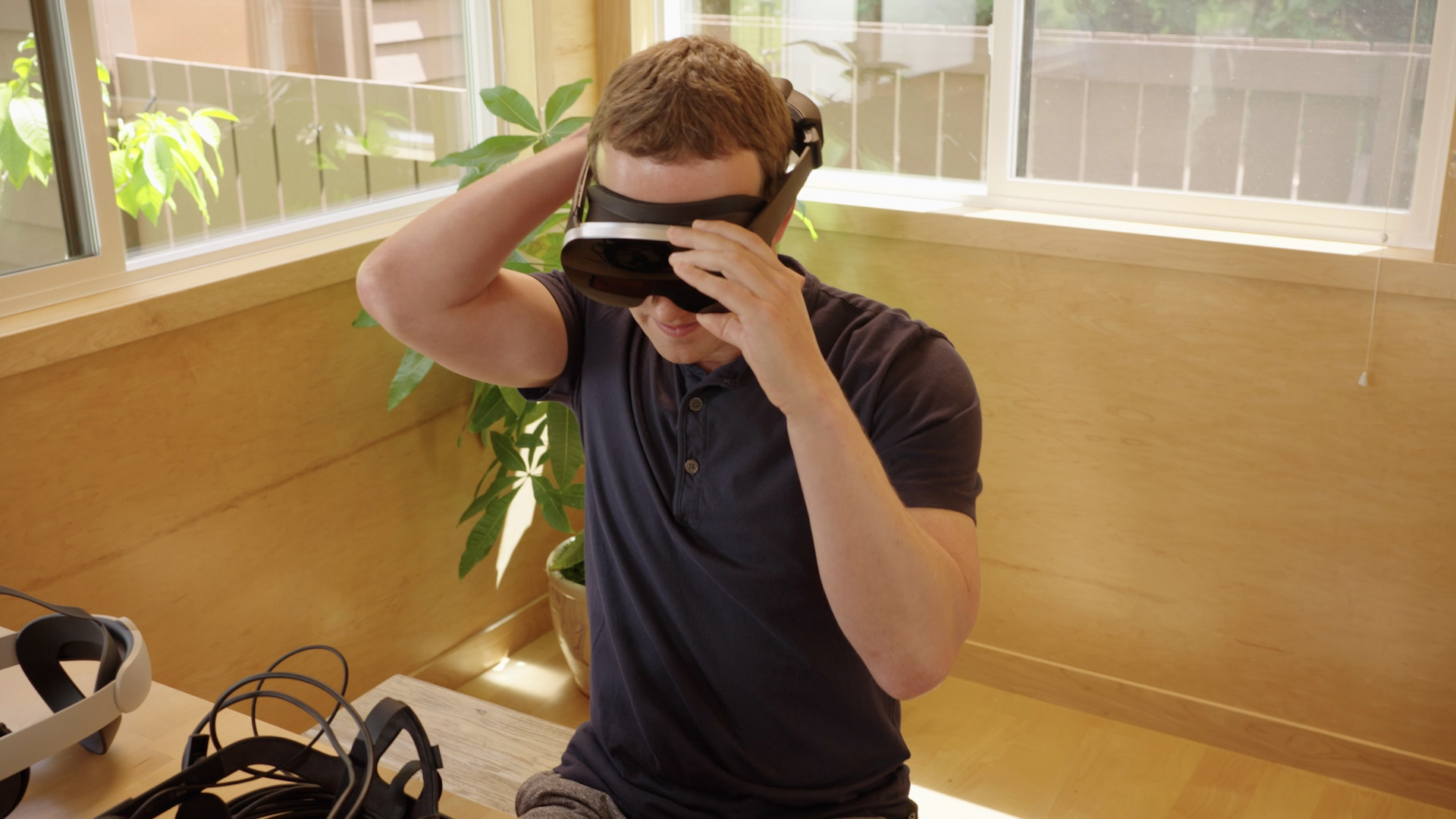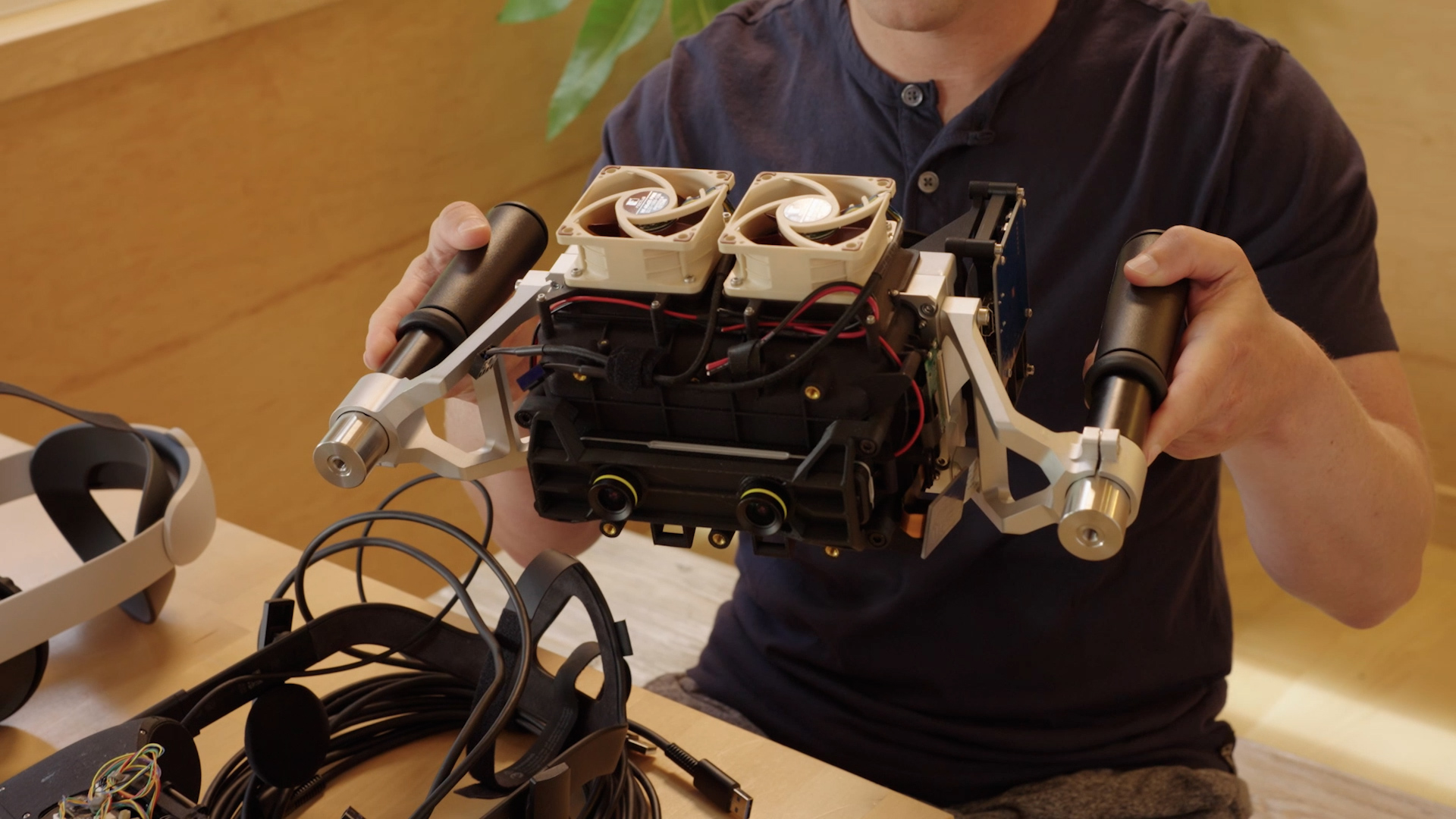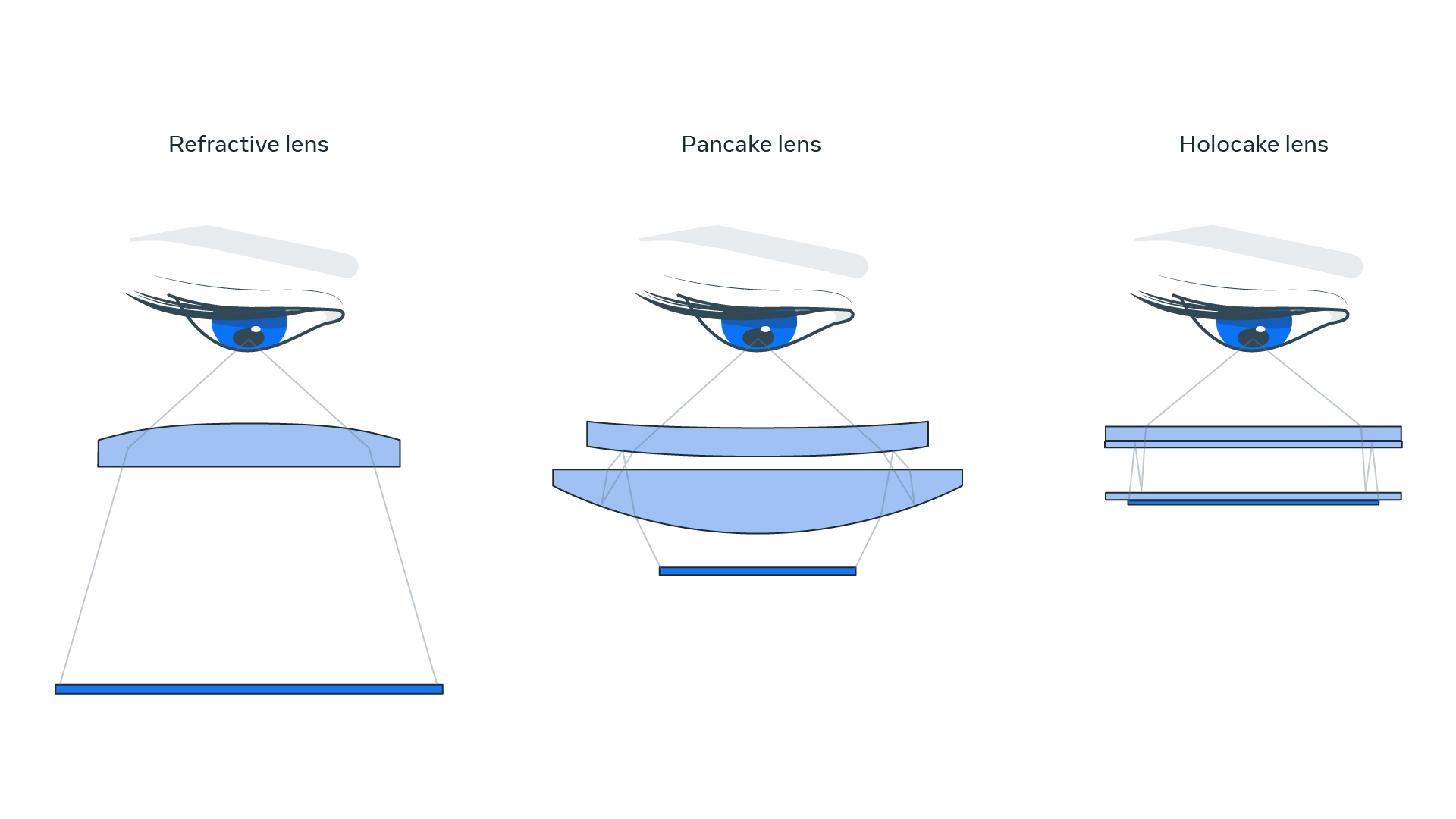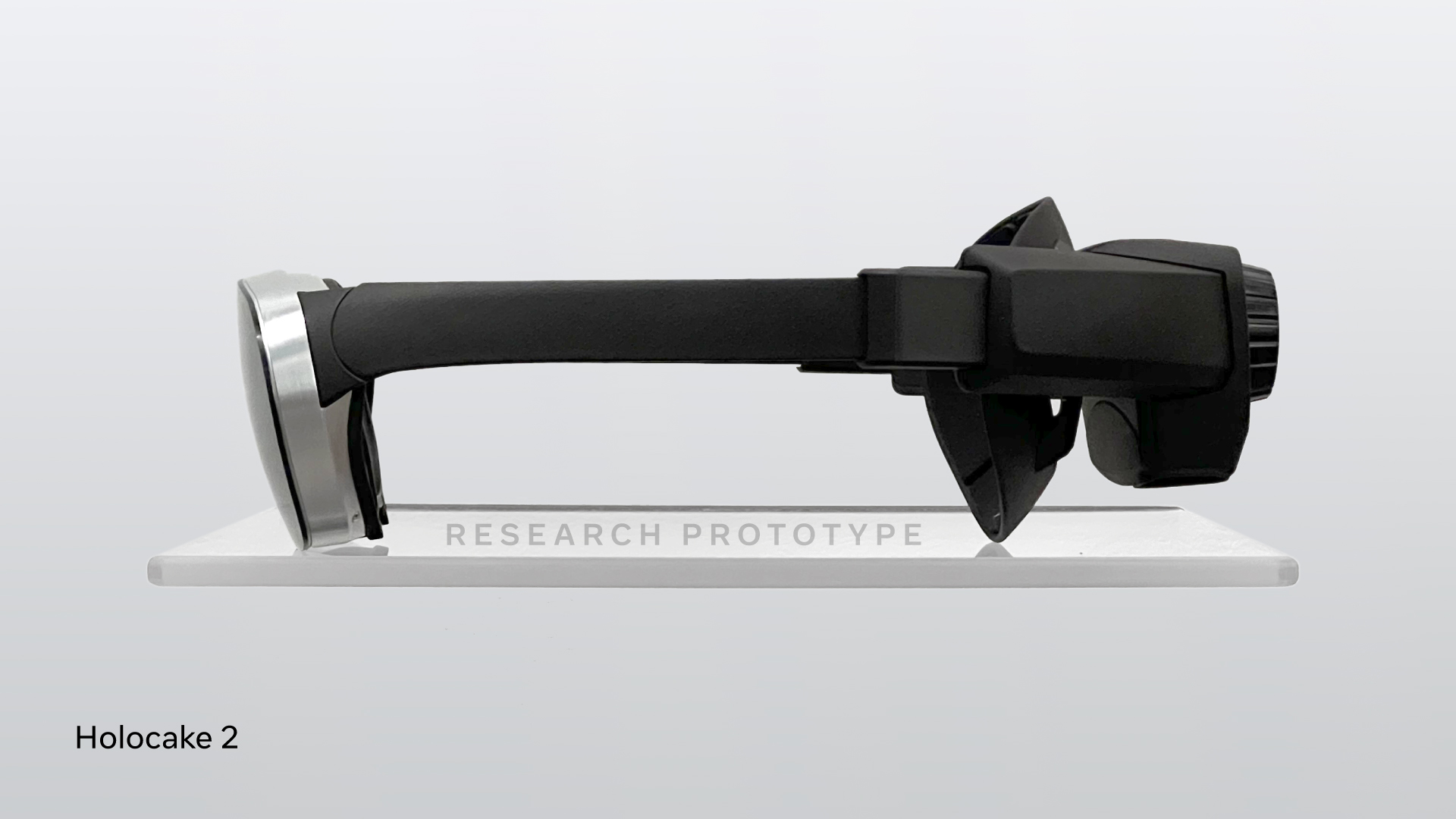
Update: Project Cambria is likely now the Meta Quest Pro, and its rumored price point is going to shock you.
Meta, the company formerly known as Facebook, has been hard at work on the future of VR and, at a recent roundtable discussion with major tech publications like Tom’s Guide, has unveiled its plan for the future of virtual reality.
The roundtable was called "Inside the Lab: Passing the Visual Turing Test" and in it Meta's CEO Mark Zuckerberg and Reality Labs' Chief Scientist Michael Abrash talked about what it would take to create more realistic virtual reality experiences through a series of prototypes.
Three of the prototypes Meta's CEO Mark Zuckerberg had on display for us were developed to improve specific areas of the virtual reality experience — brightness, clarity and color saturation — while the other was an experimental design that combines all three into a single solution.
Together they represent the future of virtual reality and offer a good sneak peek at what's to come from Meta's Reality Labs team in the years to come.
A sneak peek at the future of virtual reality

The first prototype he unveiled, called Sunburst, was designed to replicate 20/20 human vision (or 6/6 line on an eye chart), with an increased resolution at the expense of the field-of-view. That said, the design of the headset is more bulky than the current Quest 2, and would be uncomfortable to wear for long periods of time.
Next, Meta showed us Starburst, the first HDR VR headset any company has produced. According to Zuckerberg, the current slate of VR headsets out there are limited to around 100 nits of brightness — too low to accurately display bright highlights and vivid colors. Starburst aims to fix that by placing a lamp behind the LCD screen in the headset and can currently output around 20,000 nits of brightness, which is higher than even the best 4K TVs.
Sign up to get the BEST of Tom's Guide direct to your inbox.
Get instant access to breaking news, the hottest reviews, great deals and helpful tips.
Like Sunburst, however, the design of Starburst is uncomfortable to wear for long periods and would be prohibitively expensive for Meta to produce at scale.

The last of the initial three prototypes Meta unveiled was called Holocake 2, a strange-sounding headset that gets its name from the ‘pancake’ optics it uses to condense the amount of space needed for a VR headset’s display.
According to Meta, to decrease the weight of the headset Holocake uses “polarization basedoptical folding (or pancake optics) to reduce the space between the display panel and the lens” and reduces the thickness of the lens itself by replacing a conventional curved lens with a thin, flat holographic one.
Holocake is the smallest headset the company has designed to date and, although it needs to be tethered to a PC, it’s capable of running any existing PC VR game.
Mirror Lake is where it all comes together

Finally, Meta showed off a headset called Mirror Lake, which combines all the advantages of the previous prototype headsets into a single device.
Mirror Lake achieves that by using the pancake optics of Holocake plus varifocal lenses from an even earlier prototype from 2015 that Meta developed called Half Dome Zero. The lenses are mechanical and that allows them to change the focal length, allowing you to not only see far away objects but also ones that are closer to your eyes.
It’s all held together in a lightweight “ski-goggle” design that wraps around the head that makes it lighter than the current generation headsets.
The only problem? Mirror Lake is just a design schematic, not a real headset.
According to Meta, Mirror Lake is just one possible avenue that the company could take to move forward with its VR headsets, but it’s not the only way forward.
What comes next? Project Cambria
While it was exciting to see what Meta's Reality Labs has planned for us in the future, Zuckerberg was quick to say that all the prototypes he demoed for us were just that: prototypes. The next real headset Meta will launch is Project Cambria, a VR headset that will go beyond the performance of the rumored Oculus Quest 3.
We don't have many details around either of the two headsets yet and Zuckerberg wouldn't tell us any more at the roundtable event, but Meta's CEO did say that Cambria is the next big release and that it would be announced sooner rather than later.
Knowing that newer and better technology is just on the horizon may put a damper on the excitement around another VR headset, especially if it only offers a fraction of what we've seen in these prototypes, but it's clear that Meta's intent is to keep pioneering new roads in virtual reality and it's got the research team to do it.
Can't wait for the future of virtual reality to arrive? Check out the Oculus Quest 2, one of the best VR headsets on the market, that's now back in stock.

Nick Pino heads up the TV and AV verticals at Tom's Guide and covers everything from OLED TVs to the latest wireless headphones. He was formerly the Senior Editor, TV and AV at TechRadar (Tom's Guide's sister site) and has previously written for GamesRadar, Official Xbox Magazine, PC Gamer and other outlets over the last decade. Not sure which TV you should buy? Drop him an email or tweet him on Twitter and he can help you out.
